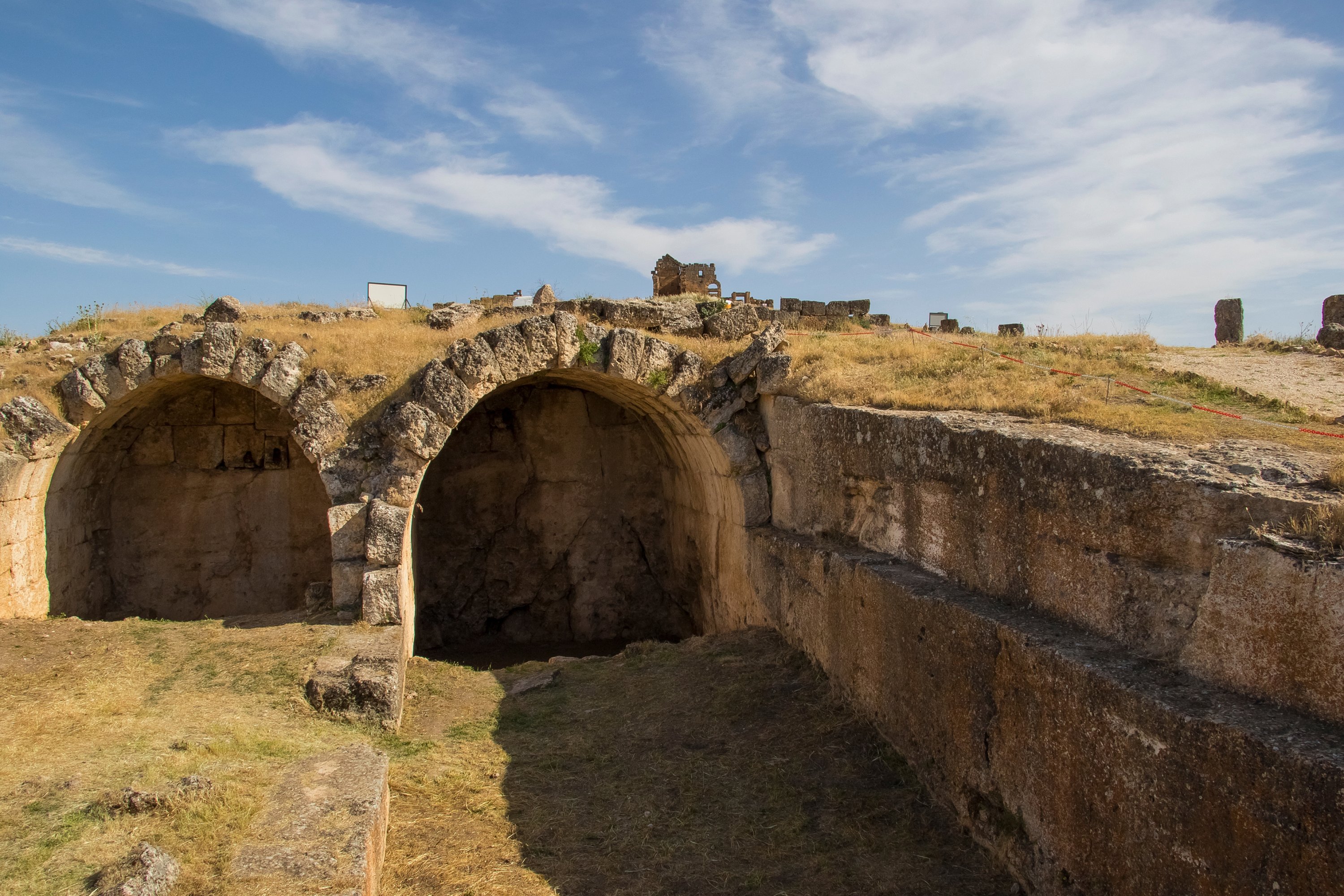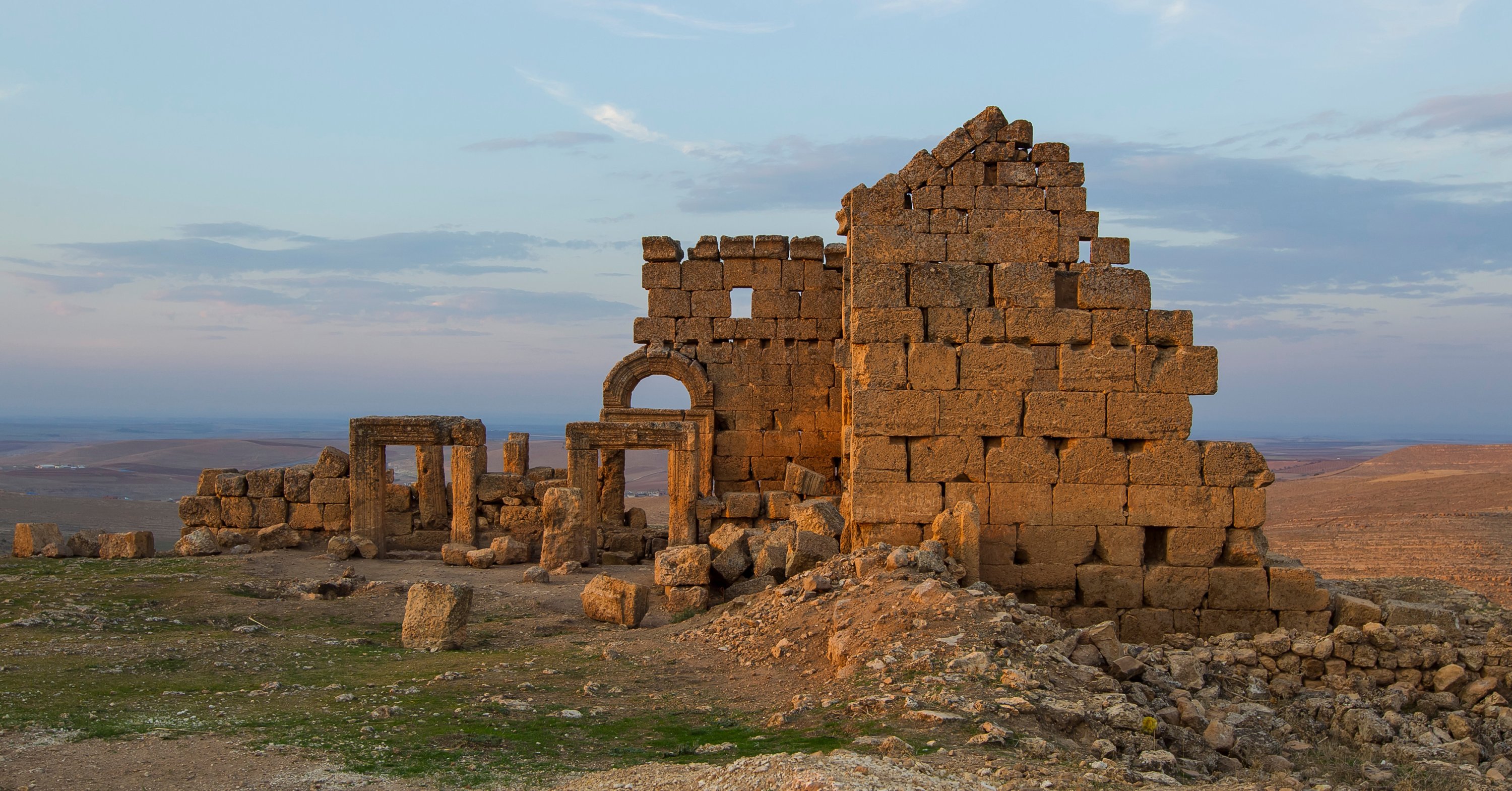© Turkuvaz Haberleşme ve Yayıncılık 2024
The ancient Anatolian geography hosts archaeological developments that have surprised the world in recent years. Discoveries made in Göbeklitepe, located within the borders of southeastern Şanlıurfa province, showed that – contrary to what is written in history books – people described as "hunter-gatherers" actually led a settled life like us and built temples 12,000 years ago. It has also been said that the 11 new hills around Göbeklitepe, which have been recently introduced to the world, will reveal great discoveries.
But there is also Zerzevan Castle, which is located in southeastern Diyarbakır province, about 150 kilometers (93 miles) from Göbeklitepe. The Roman castle is an archeological site that has already received great attention from all over the world even though much less work has been done on it.
You shouldn’t ignore the phrase you are likely to encounter when you arrive in Diyarbakır: "The sun rises in Nemrut and the sunset is enjoyed in Zerzevan Castle.” However, the real story of Zerzevan Castle is hidden and can only be seen after the sun goes down!
You have to travel 50 kilometers outside the city center to reach the castle. After walking through the arid land that resembles a different planet at times, you see Zerzevan Castle on the hill that overlooks the plain stretching from Diyarbakır to Mardin. During the day, you are likely to admire the castle's strategic position, however, at night the mesmerizing view makes you feel like you can touch the stars. The castle has struck the same chord in all those who have seen it throughout history.

In fact, Zerzevan Castle, which is a 3,000 year-old Roman structure, has been destroyed and rebuilt many times since the Assyrians. The castle, which was last rebuilt during the Roman Empire, had a legion unit of 1,200 people, consisting of selected soldiers whose identities are not recorded.
What makes the castle special is that it hosts the temple of Mithras. There are 22 known Mithras temples in the world. The westernmost temple is located in London while the easternmost is in Zerzevan. However, the sanctuary in Zerzevan Castle is the most well-preserved Mithras temple in the world, still bearing the traces of famous Mithras initiation rituals.
After the castle was conquered by the armies of the Islamic caliph Umar, there was no longer a military unit presiding at the castle. Since the castle remained uninhabited for nearly 1,400 years, other than short bouts, it remained astonishingly well-preserved.
When the first excavations were launched at the castle under the presidency of associate professor Aytaç Coşkun in 2014, everything was found in its original place. Even the 1,500 year-old roofing tiles remained intact. During the archaeological digs that continued over the course of seven years, nearly 1,200 artifacts have been unearthed from the 1% of the site excavated so far.
Zerzevan Castle was the center of astronomical observations throughout history. But how did the warriors at the castle develop an interest in the sky? It is surely because of the religion of Mithraism.
While the reason why remains unknown, the celestial bodies were given great importance in Mithraism, which is an esoteric religion older than Christianity. There were seven grades of initiation into Mithraism, which were named after the planets from Mercury to Saturn.
The roots of Mithraism stem from Iran and India. Accepted as a monotheistic religion, Mithraism takes its name from the angelic god Mithra. This archaic religion, which also influenced Christianity, quickly spread among the elite soldiers of the Roman Empire. Featuring secret rites, the religion became even more private when it was forbidden during the Roman Empire during the fourth century. It also inspired some mysterious organizations that allegedly still exist today.

Therefore, it was no coincidence that the temple of Mithras was housed in the Zerzevan Castle as it was an optimal location to observe the sky. While it is believed that the skies were watched from the castle, archaeologists have been unable to find the remains of any observation devices to date. However, some assert that artifacts featuring information about space have been found at the site but this information has not been shared with the public.
Interestingly, no written documents were found in the area over seven years of excavations. New symbols are constantly being discovered at Zerevan Castle – about which there is no information available, even in ancient sources – and most of them cannot be explained.

Excavation head Coşkun said that they have found symbols that are not yet understood, explaining: “We generally discover things related to the sky. The soldiers in the castle couldn't have had such a passion for the sky. It is probably related to the cult of Mithras.”
All of these factors triggered certain claims or "conspiracy theories" that began to spread about Zerevan Castle and the Mithras temple within. In Diyarbakır, it is said that some members of famous U.S. families whose names are often mentioned in conspiracy theories visited the temple and performed unknown rituals. It is said that cult groups from across the ocean showed an interest in the region and that extraordinary artifacts connecting Zerzevan and the U.S. were unearthed in the excavations.
While all this was being said, the International Council of Monuments and Sites (ICOMOS) declared that the work being done at Zerzevan Castle was one of the six important stories inspiring world cultural heritage. The castle was added to the UNESCO World Heritage Tentative List last year and it is thought to have a high chance of entering the permanent list quickly. It seems that Zerzevan will be much talked about in the future.
